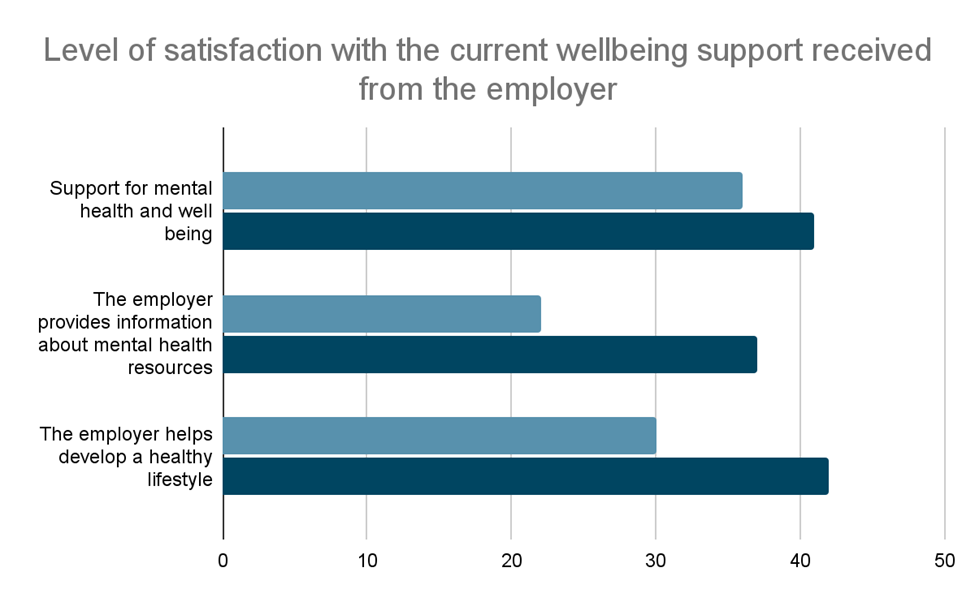Measuring Wellness ROI: How to Evaluate the Effectiveness of Your Corporate Wellness Program

Corporate wellness programs are more popular than ever because of the benefits they bring to employee health and the organization. According to a 2023 survey by the American Psychological Association, 92% of surveyed employees said that it is very important to be part of an organization that values their emotional and psychological well-being.

In this blog post, we’ll give practical tips to evaluate the effectiveness of corporate wellness programs. We’ll explore key metrics, methodologies, and best practices that organizations can use to assess the impact of their wellness initiatives and make data-driven decisions for future program improvements. These three steps are key to understanding the impact of your wellness initiatives:
1. Define Success: Determine the Objectives and Key Performance Indicators (KPIs) of Your Wellness Program
Before embarking on the journey of measuring ROI, organizations must clearly define the objectives of their corporate wellness programs. These objectives should align with the company's overall goals and reflect a genuine commitment to employee well-being. Whether focusing on reducing healthcare costs, improving employee morale, or increasing productivity, setting clear and measurable goals is the first step toward a successful wellness program.
Defining and tracking KPIs play a pivotal role in tracking the progress and impact of wellness initiatives. When defining KPIs, ensure they follow SMART (Specific, Measurable, Achievable, and Time-bound) guidelines. Examples of KPIs for a wellness program may include:
- Healthcare cost reduction: Measure changes in healthcare expenditures, including insurance claims, to assess the program's financial impact.
- Employee engagement: Track participation rates in wellness activities, workshops, and challenges to gauge employee engagement.
- Absenteeism rates: Monitor the number of sick days taken by employees before and after the implementation of the wellness program to assess its impact on absenteeism.
- Productivity metrics: Analyze productivity data, such as project completion rates and meeting attendance, to identify any improvements associated with the wellness program.
To understand and improve the impact of their wellness programs, organizations should apply both quantitative and qualitative measures.
Quantitative Measures: Track and Analyze Data to Assess the Financial and Non-Financial Impact of Your Program
Quantitative measures are essential for assessing the financial and non-financial impacts of corporate wellness programs. Analyzing data provides concrete evidence of the program's effectiveness and helps organizations make informed decisions for future improvements. Here are key quantitative measures to consider:
- Healthcare cost savings: Calculate the reduction in healthcare costs, including medical claims, prescription expenses, and hospitalization, as a result of the wellness program. To do this, you can calculate the before-and-after healthcare spending.
- Wellness return on investment (ROI): Compare the total costs of implementing the wellness program to the financial benefits achieved. The ROI formula is:
(net gain from investment/cost of investment) x 100.
- Productivity metrics: Use data on employee productivity, such as project completion times, error rates, and overall efficiency, to assess the impact of the wellness program on workplace performance.
- Employee turnover rates: One of the main causes of employee turnover is burnout. According to the American Psychological Association, employees who experience burnout are twice as likely to leave their jobs. Evaluate whether the wellness program has contributed to a reduction in employee turnover by creating a healthier and more positive work environment.
- Absenteeism reduction: Measure the decrease in absenteeism rates and associated costs resulting from improved employee health and well-being
- Health metrics: Assess if your employees are healthier than before the wellness program was implemented. Wearable devices help employees track health metrics such as blood pressure, daily steps, and sleep quality. Providing a way for your employees to submit data anonymously maintains their privacy while giving you the data you need. Improvement in any of these metrics may mean the wellness program is working well.
Qualitative Assessment: Use Surveys, Feedback, and Employee Testimonials to Understand the Impact of Your Wellness Program
While quantitative data provides a numerical perspective, qualitative assessments offer valuable insights into the holistic impact of corporate wellness programs on employees' well-being and satisfaction. Incorporating employee feedback through surveys, focus groups, and testimonials provides a more nuanced understanding of the program's effectiveness. Consider the following qualitative assessment methods:
- Employee surveys: Administer surveys to gather feedback on employees' perceptions of the wellness program. Inquire about satisfaction levels, perceived benefits, and suggestions for improvement.
- Focus groups: Conduct focus group sessions to delve deeper into employees' experiences with the wellness program. This interactive approach allows for in-depth discussions and the exploration of diverse perspectives.
- Individual success stories: Showcase individual success stories and testimonials from employees who have experienced positive outcomes from participating in the wellness program. This not only highlights the program's impact but also inspires others to engage actively.
- Employee assistance program (EAP) utilization: Assess the usage of EAP services, such as counseling and mental health support, to gauge the program's effectiveness in addressing employees' overall well-being.
Why Measuring Wellness ROI Can Improve Your Company's Culture
When an organization invests time, money, and effort in their employees’ well-being via corporate wellness programs, they should measure the return on this investment. By defining clear objectives, establishing relevant KPIs, and employing a combination of quantitative and qualitative measures, companies can gain a comprehensive understanding of the impact of their wellness initiatives. This data-driven approach not only helps justify ongoing investments but also enables organizations to refine and tailor their programs for maximum effectiveness, creating a workplace culture that prioritizes the health and happiness of its employees.
About CoreHealth
The CoreHealth corporate wellness platform helps organizations develop, evaluate, and customize the best wellness programs. CoreHealth is dedicated to empowering health and wellness programs for other organizations. Our customizable platforms help businesses support their biggest assets: their employees. With a tailored CoreHealth program, your organization can improve employees’ health using a custom solution that seamlessly integrates with existing software.
Want to know more? Speak to one of our technology experts today!
Learn more about how to measure wellness ROI with these related articles:
About The Author
CoreHealth Marketing
CoreHealth Technologies Inc. is a total well-being technology company trusted by global providers to power their health and wellness programs. Our wellness portals help maximize health, engagement, and productivity for 3+ million employees worldwide.



